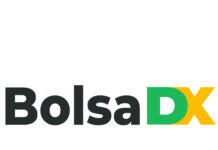
The two major objectives making the use of the blockchain, a type of the distributed ledger technology (DLT) implementation, very attractive for both individuals and companies are the safe and cheap transfer of funds anywhere in the world in minutes. However, these are not the only advantages and possibilities of the blockchain.
A public blockchain can be managed by a peer-to-peer network of computers autonomously without having to rely on a centralized party for authorization. This presents a new decentralized form of governance allowing to control the issuance and the distribution of digital assets in an extremely cost-efficient way: the blockchain system sustains itself by compensating for the consumed energy and the network’s resources.
Although the network is managed collectively there’s very low risk of fraud due to its transparency allowing every participant (node) to see the moves of everybody else. In case one of the computers in the network gets attacked the others will be able to retain the data protecting it from being lost or forged. The same is true about replicating data such as digital assets and attempting to assign its ownership to different people in a malicious way. On the blockchain, these acts can be easily detected and revealed to the entire network. We can go on and on about the advantages of the technology forever, instead, let’s just look at the actual use cases of the blockchain across industries:
Cross-border payments
Applied to cryptocurrencies, e.g. to Bitcoin at first has proven blockchain a good and much cheaper alternative to services like PayPal, Western Union and international bank transfers with extremely high charges, slow speed, and cumbersome verification process carried out by a financial institution.
Trade settling
Having removed the middleman from the trading process, the blockchain allowed to speed up the settlement process. This wouldn’t be possible without the transparency and security ensured by the network’s computational resources and vigilance. The good use-case example here would be not only cryptocurrencies but also banks (e.g. Citi) and stock exchanges (e.g. Nasdaq).
Automation
The emergence of smart contracts, decentralized applications (dAPPs), decentralized autonomous organizations (DAOs) and the Internet of Things (IoT) concept have presented an exciting curve for the implementation of the blockchain in science- and the technology-driven markets where automation is needed. Bitcoin and Ethereum are not the only examples of the successful implementation of the blockchain for the sake of automation as they have inspired an array of decentralized platforms for dAPPs and decentralized organizations to appear and take shape.
Visibility
IBM and Maersk lately started exploring the possibilities of the blockchain in the shipping industry and the supply chains, where the due visibility and traceability has been lacking before. Digitizing the supply chain as such will inevitably lead to the wider implementation of the blockchain due to its transparency and efficiency.
Fraud prevention
Introducing the blockchain technology to the banking system especially when it comes to compliance, anti-money laundering (AML), Know Your Customer (KYC) and other security procedures such as anti-terrorist financing is an extremely cost-saving alternative already put to test by Goldman Sachs, Rabobank and BNY Mellon Treasury Services among others, as well as a number of fintech startups (e.g. CoinFirm).
Voting
Denmark, Estonia, and Norway have already put the e-voting on the blockchain to test. Without compromising the anonymity of the voters, their votes can now be collected, stored, analyzed and retrieved safely. This makes the blockchain suitable for prediction markets that are growing in number and popularity these days.
What’s more?
It would be very naive to presume that all the possible blockchain implementations can be listed and systematized, however at this point of the technology’s development creating such a summary is impossible.
As you may have guessed from the examples above the blockchain is too big to ignore, and your bank, company and government all have plans to digitize their data and move it to the blockchain. It offers a better, cheaper, faster, safer and more efficient alternative for the majority of the industries’ needs, therefore embracing it in the early stage of development is vital for companies.










